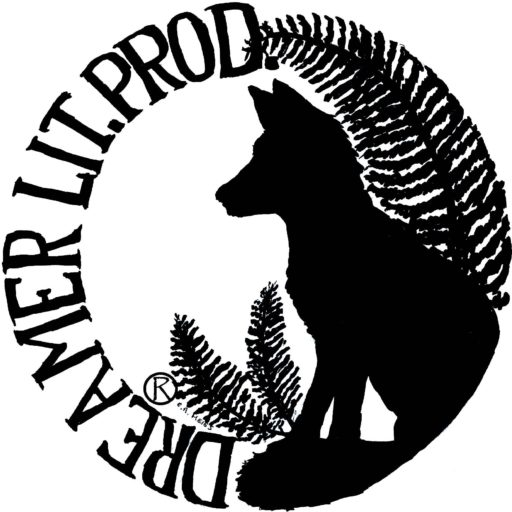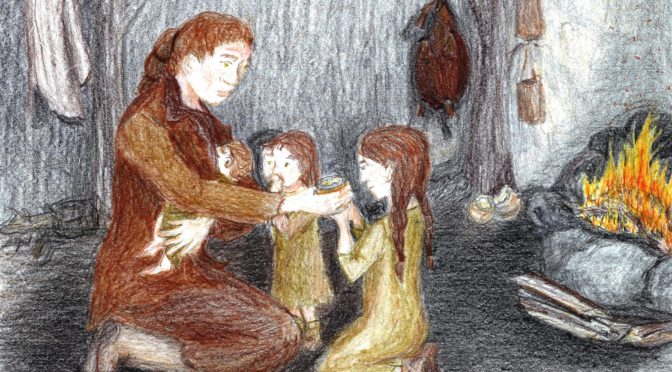The sun has not yet crested the horizon, but a young Neanderthal woman named Soosha has already begun her day. It is still dark when her infant’s whimper reaches her ears, signaling that his belly is empty and nappy, full. Soosha retrieves the baby and removes a scrap of hide used as a diaper. Seeing that the absorbent cattail fluff within the diaper is soiled, she shakes it over their fire pit. The dirty fluff falls onto the red coals of a dying fire, where it sends up an acrid plume of smoke.
The now squalling and impatient infant is cleansed and his nappy is repacked with clean fluff. He calms as he is nursed, despite that his mother is simultaneously prodding the fire where the cattail fluff, even in it’s somewhat dampened state, has begun to burn. Soosha carefully adds fuel to the flames to bring both light and warmth to their little home. When the baby has dozed off again, Soosha tenderly kisses his forehead and he is put back to bed. She then builds up the fire so their small earthen dwelling will be warm by the time the family arises from their slumber.
Now that it is autumn, the clan has settled into their winter lodgings. Their earthen homes are dug into a hillside and then shored-up with sections of tree trunks or large branches. It is a cozy, if dark and somewhat claustrophobic place to wait out the coming days of sub-freezing temperatures and fierce winds. Some of the clan stay here year-round: those who are not able to make long journeys as the rest follow game, setting up open-air homes at each site. The ones left behind are the most fragile of the clan, primarily the elderly and the injured. They keep animals at bay who might want to steal food stores, or invade the temporarily unoccupied homes. The use of fire and marking their borders with urine discourages most animals from venturing too close.
Throughout the warmer months, the rest of the clan occasionally stops in from their travels to drop off meat, hides, and animal by-products. This adds to what the permanent residents have been able to forage. The in-ground homes have the benefit of being cool in the summer, as well as warm in the winter. While the near-constant temperature of 50 to 55 degrees may be quite a bit warmer than outdoor winter temperatures, it can feel chilly during summer. Sometimes a low fire is maintained even on hot days to take the edge off the chill and for humidity control. After years-long occupation of this site, most of the easily scavenged wood has already been burned. Other than deadwood that sometimes falls from the trees, they must make short hikes to hew firewood with axes hafted with knapped-stone axe heads. In addition to keeping fire pits fueled, the chimney holes must be kept clear of obstructions, such as brush that might catch fire, or snow accumulation during and after each snowstorm.
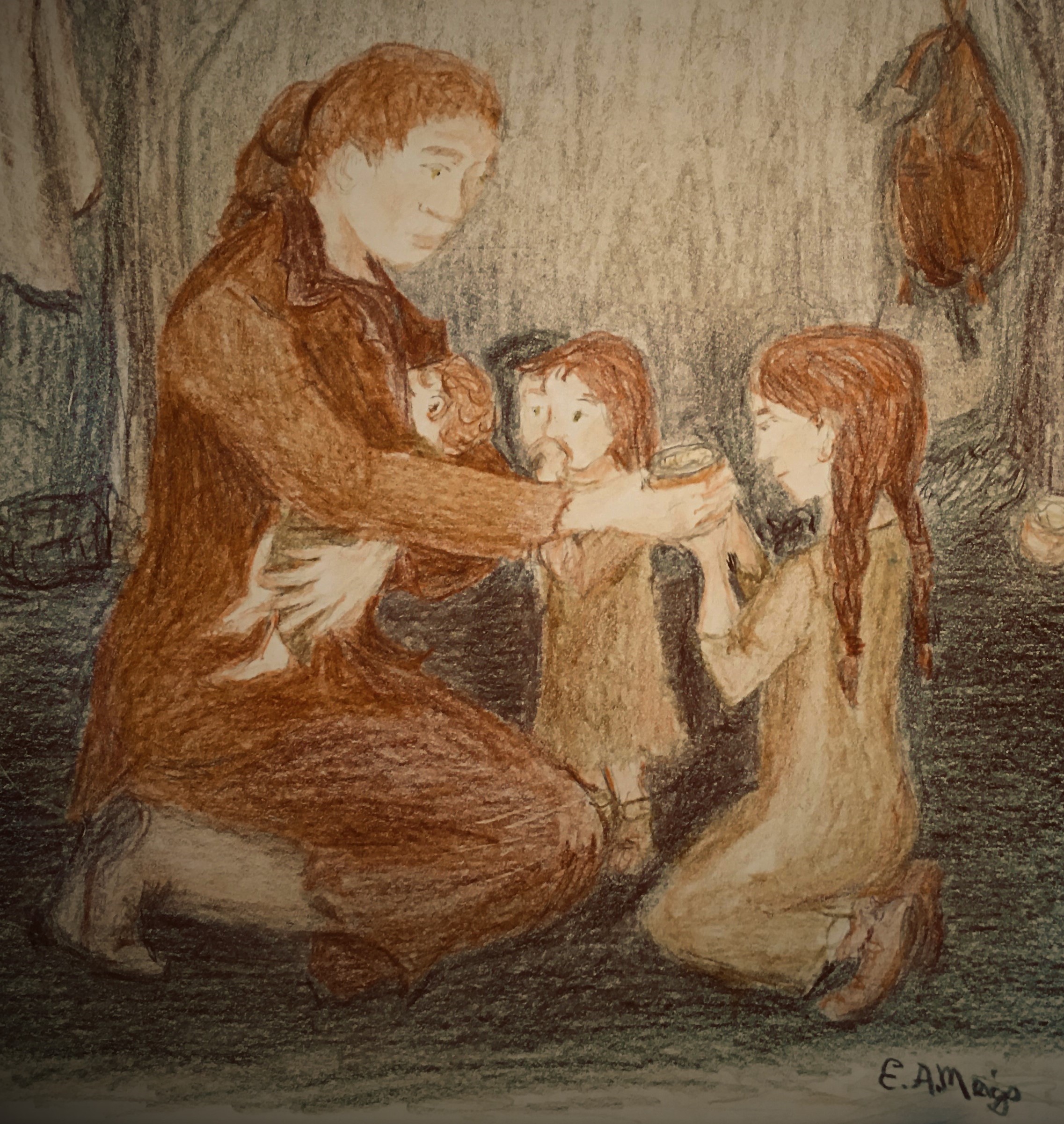
For now, all is quiet. Soosha is grateful the baby did not awaken his older siblings. She slips back into the nest of bedding she shares with her mate, Killek. She snuggles contentedly against him, placing an arm around his warm back, and she is soon fast asleep.
It will not be not long before they will start their day. Killek and his older brother Tonk are going hunting and they must be away as early as possible. When Soosha feels Killek rouse, she rises as well, and they both pull on various articles of clothing in the semi-darkness. They have a few lamps made from horns of a young aurochs, that they filled with fat and fitted with a twisted plant-fiber wick. The lamps are used sparingly to conserve precious fuel, but Soosha lights one now to illuminate the chamber as they prepare for the day’s activities.
While Killek ducks through the low, hide-covered doorway to retrieve an armload of wood, Soosha makes a simple breakfast of fresh berries and slivers of roast venison, leftover from their previous night’s meal. These foods are washed down with water, served in cups made from dried gourds. After breaking their fast, man and woman work together in companionable silence to collect the things Killek will need to carry, although today he will be traveling light. Ice Age winters meant bundling up in layers of clothing, but for now they can still venture out unencumbered by heavy animal skin coats, head coverings, mittens, and boots.
The hunters have been keeping an eye out for tree trunks sporting fresh scars from bucks that have been scraping them with their antlers. Such a place would be a good spot to ambush a buck, who generally returns each morning to see if does have visited in his absence. Soosha is relieved that this will be a relatively routine hunt. Any outing has the potential to be dangerous, but an encounter with a deer, even a buck during the rut, is no where near as perilous as an encounter with larger animals, such as aurochs, wisents, woolly rhinos, or worse still, woolly mammoths.
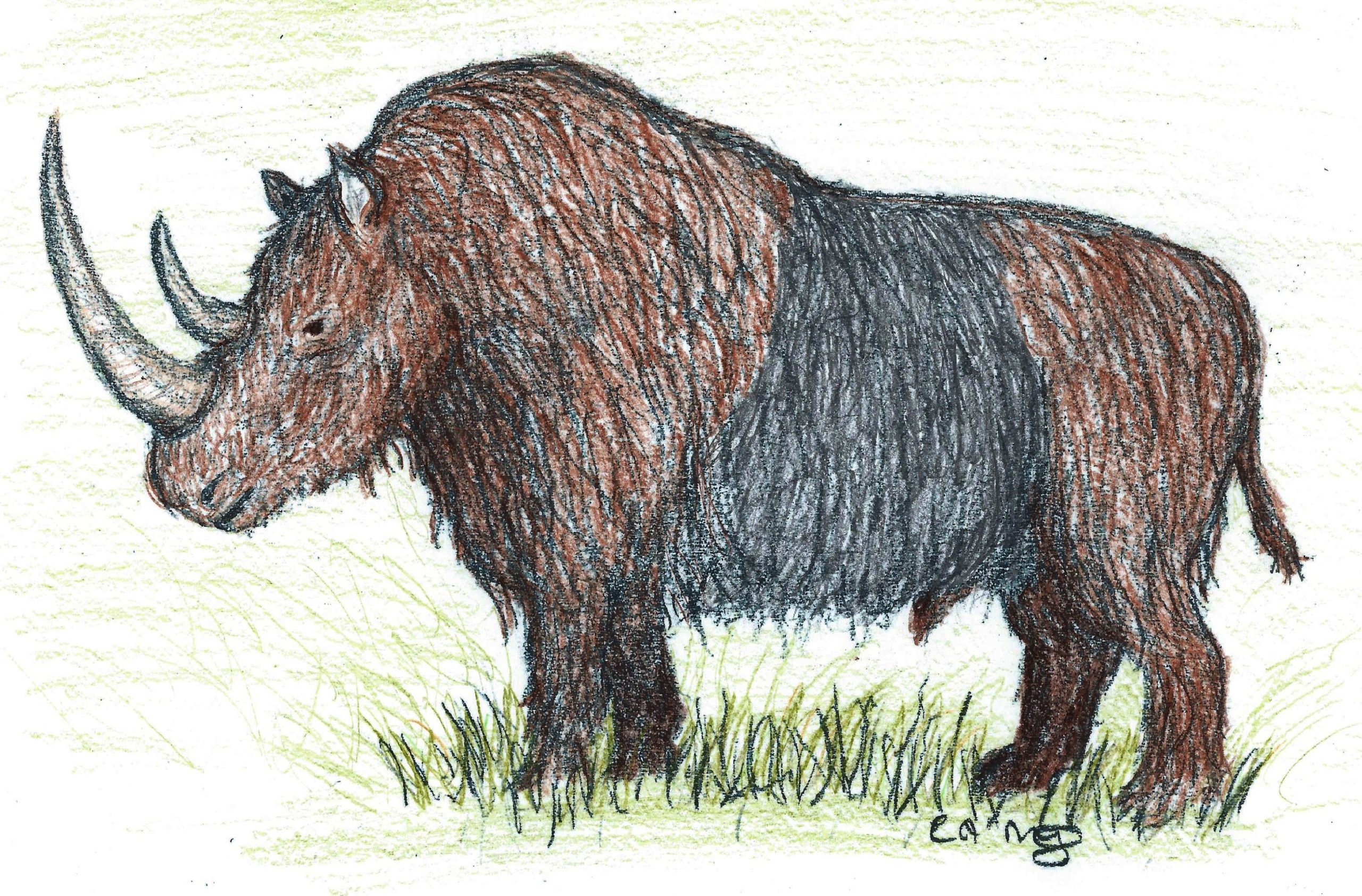
Soosha takes comfort in knowing that Killek is in his prime; young enough to be at his peak of strength and stamina, but old enough to know how to avoid most hazards. He is well built for the demands of his daily life. Like most Neanderthal men, he is taller than she is, the top of her head is just a bit higher than his shoulder. Although Killek is lean, he weighs considerably more than she does. His powerful right arm has been so stressed by the forces it regularly exerts, that the bones are substantially thicker than those of his left arm, and the size of the muscle attachments on his right arm indicate heavy use.
Soosha, on the other hand, is small, but she is also strong. Her daily chores are numerous, and often they require much strenuous labor, albeit, not as extreme as her mate’s. The bones and muscle attachments on Neanderthal women’s arms were about equal, indicating that most Neanderthal men and women were specializing in different tasks. (For more on sexual dimorphism: Scroll to pg. 129)
After Killek leaves with his brother, the children awaken, one by one. The toddler is not yet fully weaned, and as mother and children settle by the fire, the tot climbs onto his mother’s lap to nurse. When all the children are fed, she adds fuel to the fire and, infant on her hip, she then slings their empty water bag over her shoulder. The family walks down to the stream, where Soosha places the baby in the arms of her six year old daughter, and bends to refill the bag in the rushing water.
As they stand at the stream, others from their clan also converge on the rivulet to replenish their water supply. Most of the clan consists of related individuals. They discuss plans to forage for various foods that day. It is vitally important to harvest and preserve as many foodstuffs as they can for the coming winter. Many of their chores involve working hides, processing plant fibers to make baskets or twine, or sewing clothing, footwear, sacks, and backpacks, but much of that will have to wait for the time when the last of autumn’s bounty has been collected. As the season grows colder and bad weather often keeps them housebound, that will be the time to create the many things each family uses in their day-to-day lives.
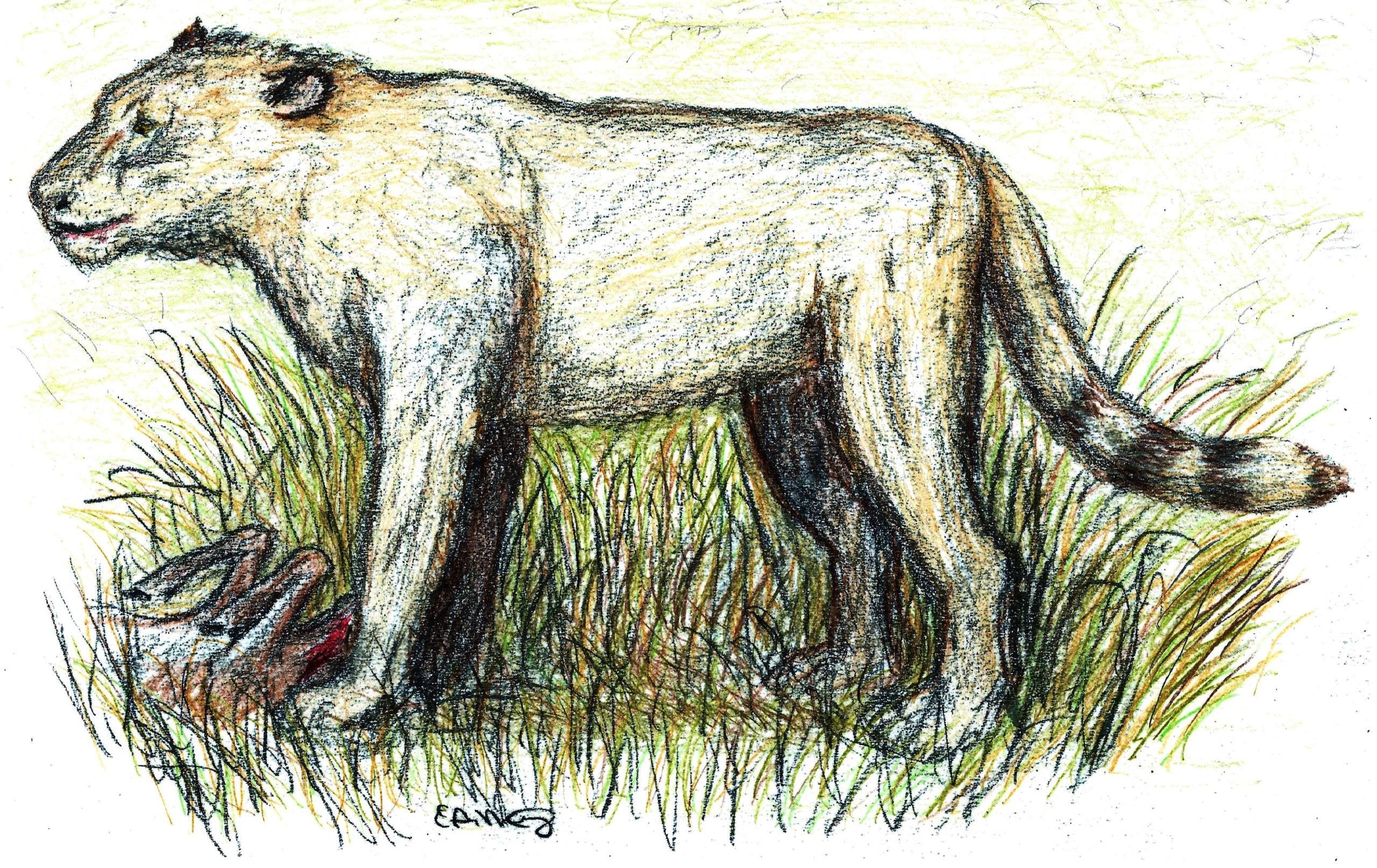
Hunts may take place year-round, but spring and fall are an especially active time due to seasonal migrations and the annual ruts. Spring hunts often take place on the faraway plains. Game is abundant there, but so too are large predators, such as the cave lion. The grasslands are a very dangerous place, not only because of threats posed by predators, but also because the prey animals themselves can be downright huge. If a serious injury is to occur, this is often where it happens. Fossilized remains of Neanderthal men show signs of a very rough life (scroll down to “Fractures“). Their injuries are compared to those of rodeo riders, and amputations were not unknown. Even smaller prey such as fallow deer or ibex still have the potential to gore or kick a hunter.
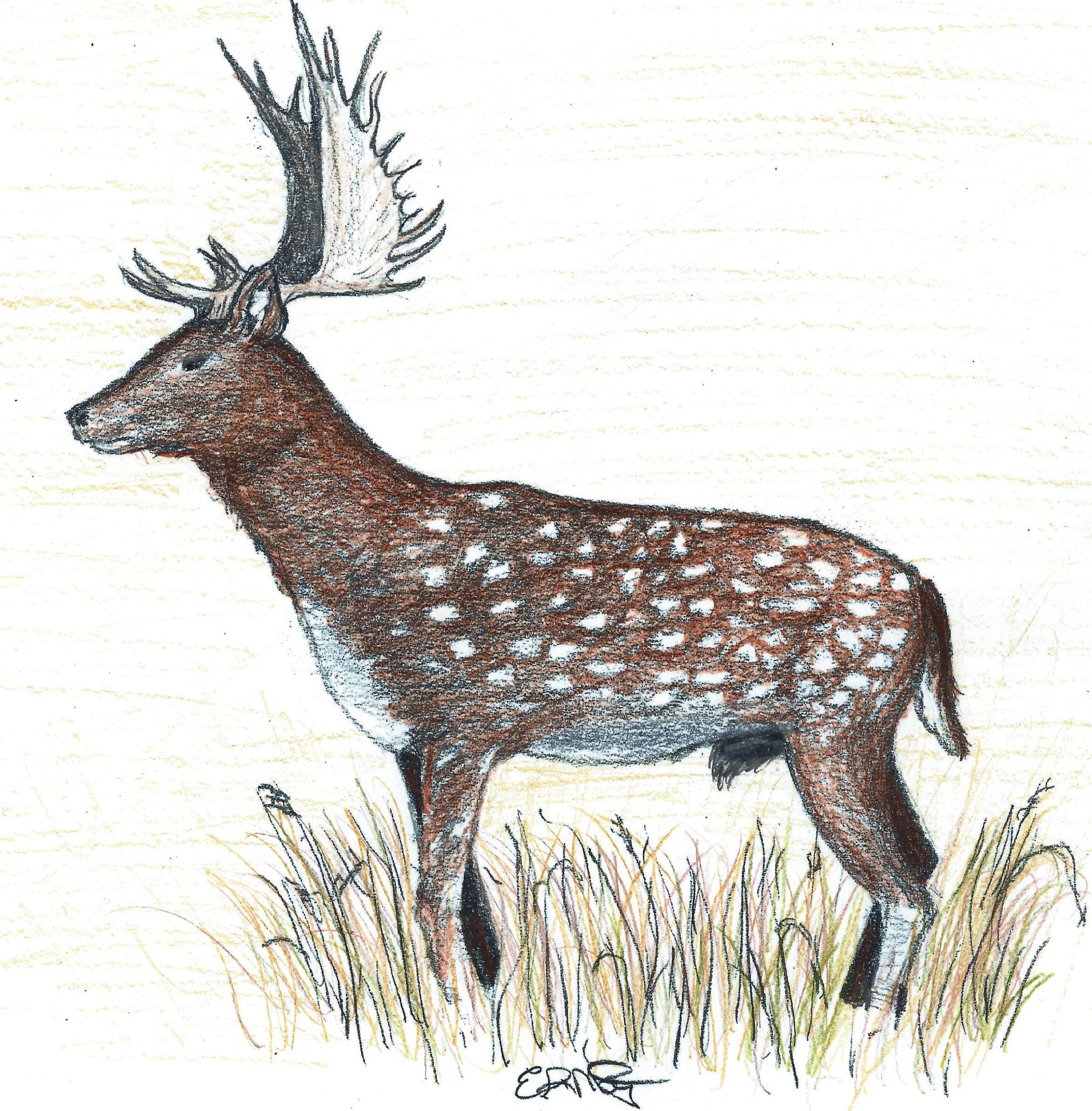
While the clan goes about their day, Killek and Tonk march steadily through the forest. The air is absolutely still. There is no wind to whisper among the tree branches or rustle the leaf-littered trail. Despite their efforts to walk as quietly as possible, each step produces a slight but audible crunch. Tonk and Killek continue until they reach the place where the buck has left his marks. Bucks not only scrape their antlers on trees to rid themselves of the putrid shreds of velvet as it is slowly rotting off, but it is also a way of attracting does. Between the antler scrapes and scrapes the buck has dug into the ground, does can pick up their scent and then decide if this buck is a potential mate or not. Bucks renew their scrapes every day and stop to sniff at them, in hopes that they might include the aroma of a receptive doe. With luck, the hunters will be able to find this buck as it makes its daily rounds. However, if the buck picks up human scent, there is a chance he will not approach at all. The men could only conceal themselves in the nearby brush and hope for the best.
The sun rises higher. Killek and Tonk remain absolutely motionless. They have done this often enough over the years that they do not need to formulate a plan. They simply await their prey and assuming he appears, dart out from their hiding places and lance him behind his forelegs with their spears, where they might hit the heart and lungs. Birds and insects flit around them. Even squirrels come to scamper nearby as though the two men were just another part of the forest. At long last they hear the sounds of snapping twigs. Something is coming. The buck’s musky odor becomes more apparent as he closes in on them. He is a young fallow deer with a modest set of antlers, but he appears well-nourished. His tongue is out, as he tastes the air for the scent of does. A few bits of miscellaneous foliage decorate his antlers.
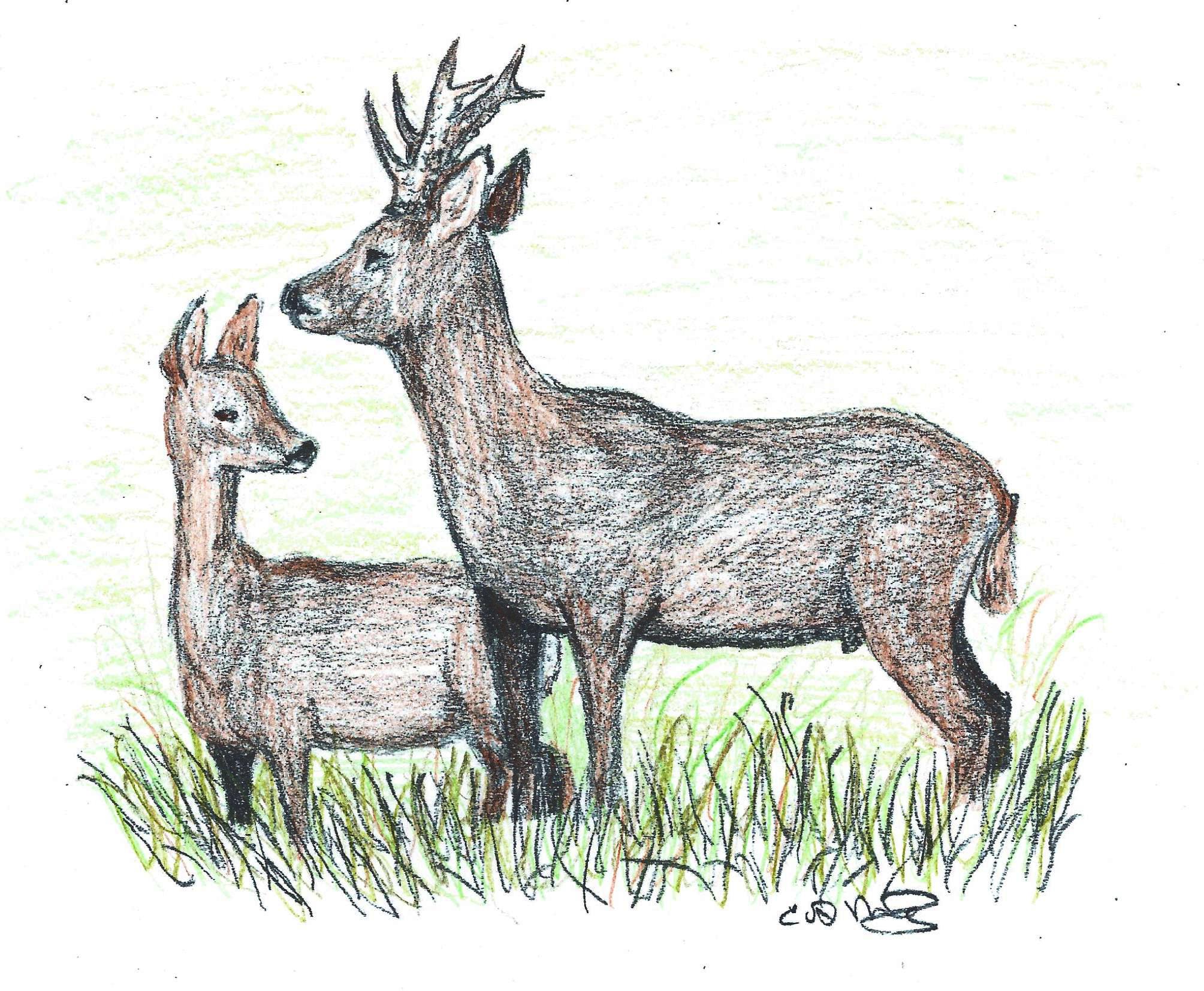
The buck pauses to freshen the rut where he has pawed the earth with his hoofs and then deposits a stream of urine into the shallow trench. There, he does a brief dance, splashing the muddy liquid onto his forelegs. Next, he steps up to the mark he has carved into the tree and sniffs, upper lip raised and pink tongue still protruding. The buck positions himself to enlarge the scrape on the tree and at that moment Killek saw Tonk lift one finger very slightly. This is the signal to strike.
After the buck is ambushed, has expired, and is gutted, he is carried back to their collection of earthen dwellings, where he is skinned and butchered. The buck is small in size, but nevertheless, clan members are pleased to see that the first hunt of the rutting season has been a success.
As the day winds down, the clan assembles around a central firepit to enjoy the fruits of their harvests in their evening sup. The meat and organs of the buck are consumed in their entirety during this hearty meal, and his antlers and bones will be repurposed into tools, his sinews into threads, his hide into clothing. Little goes to waste; in fact, every slain animal contributes many valuable resources to the clan’s welfare.
Afterwards, the group relaxes around the fire, enjoying conversation until it is time for the nightly story. Soosha’s mate Killek is a Keeper of Stories, a role he inherited from his father. Often he is asked to tell one of their traditional tales, one that has been retold for many generations. This evening he recounts a story of The People of the Wolves. When the fire has burned low and Killek’s tale is complete, the families bid one another good night. Soon, winter will be upon them and it will be too cold for these outdoor gatherings, but for now, they are an important part of the day. They reinforce the bonds between those in the clan and add a pleasant diversion to what is often a harsh existence.
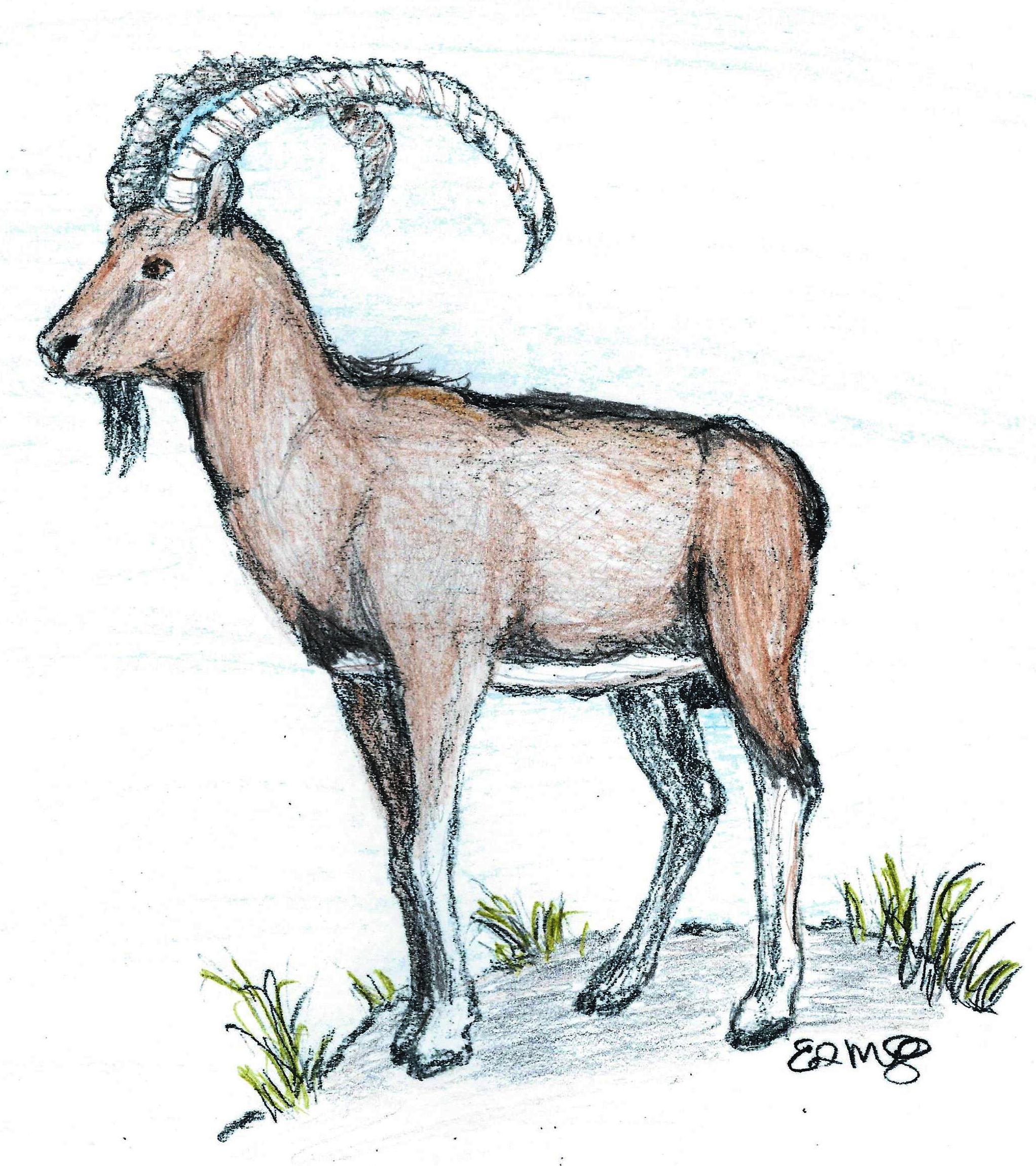
This blog is less a story and more of an informational piece (unlike my books, which are stories – although I make every attempt to make them as scientifically accurate as possible ). It contains some scientific data, but also considerable conjecture derived from many decades of reading scientific papers, books, and articles (and personal experience and formal study). Early humans left scant evidence to tell us about their lives, so we are left to speculate on tantalizing clues. Theories change frequently and some theories directly contradict each other, making it challenging to draw an accurate picture of life during prehistoric times. I strive to collect data from many sources and collate that which I feel is the most probable into a coherent hypothesis that includes not only paleoanthropology, but also zoology, climatology, and ancient survival tactics.
As you may have guessed, I have endowed my Neanderthal characters with the intelligence and skills needed to survive in an Eurasian Ice Age setting. I believe they would have needed winter shelters that can withstand extreme weather, and temporary open air shelters to be used when following game during warmer seasons. Also, they required a means of heating and lighting their homes throughout long winters, ample ability to hunt and forage a wide variety of foods and materials, and manufacture fitted (although perhaps not terribly stylish by our standards) clothing, footwear, and outerwear.
The Neanderthal endured through some of the most inhospitable conditions mankind has ever faced for over 200,000 years(longer, if you include the proto-Neanderthal). Out of necessity, they would have been master outdoorsmen and owned comprehensive knowledge on how to leverage every resource to its utmost advantage. I eagerly await each new discovery as science continues to explore historical clues left by our early human ancestors, and bring more of their legacy to light.
Dreamer Books: An Ice Age Saga brings to life an era that is well known for its megafauna and brutal climate, and peopled it with those who must wrest a livelihood from a fierce wilderness. Their harrowing adventures help to strengthen families and forge powerful friendships. Then, as now, it is survival and the preservation and continuation of our clans that drives us.
